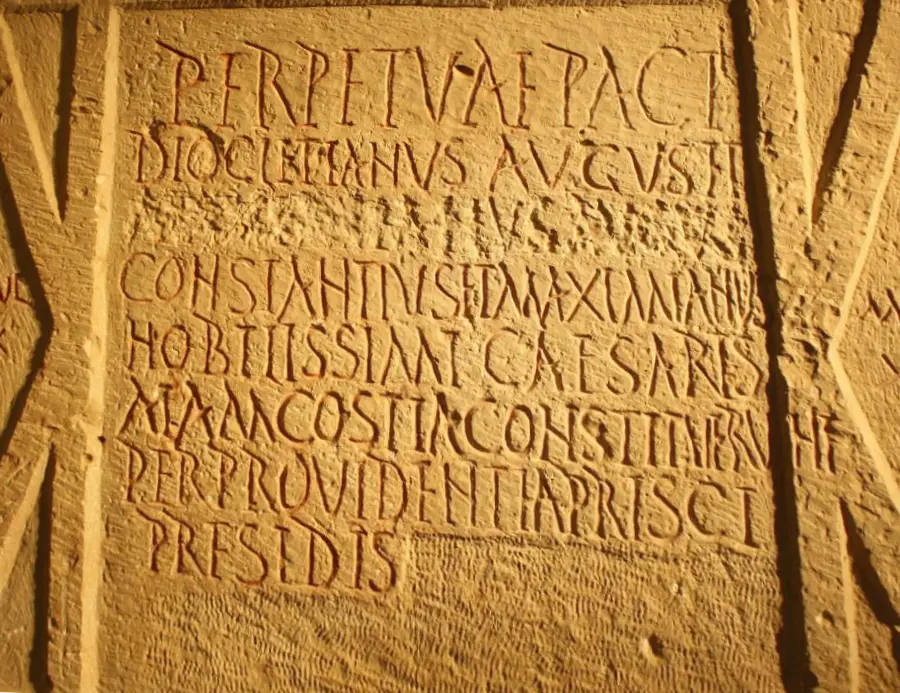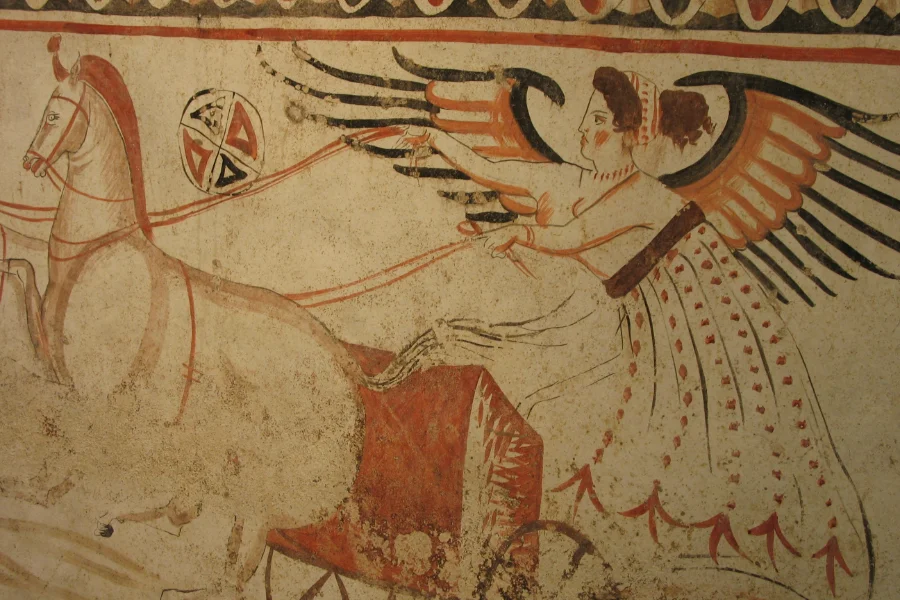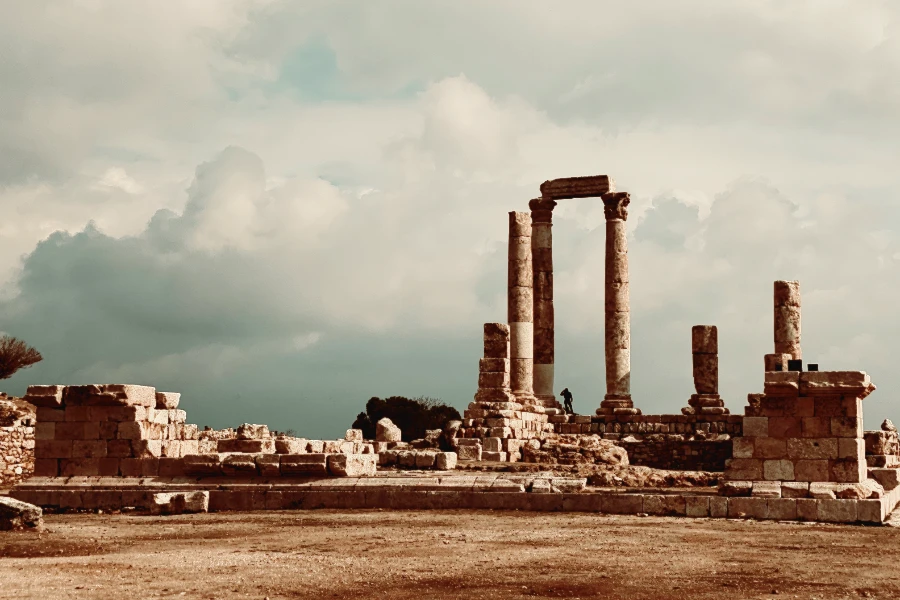The Gospel of Peter is an intriguing retelling of Jesus’ passion narrative that was lost for a significant period of time. While it may not align with the mainstream Christian canon, the Gospel of Peter offers a unique perspective that enriches our understanding of Gnosticism and its influence on spiritual discourse. It is often attributed to the Apostle Peter, who is known as the beloved disciple of Jesus and famously denied him three times before the crucifixion, as described in the Bible. According to tradition, Peter served as the first bishop of Rome and Antioch, and is considered the first pope of the Roman/Orthodox Church. However, scholars have cast doubts on this claim. Historical evidence suggests that Christianity was primarily spread by the apostle Paul, previously known as Saul, who was a tax collector before his conversion to Christianity and played a pivotal role in shaping the belief system. In fact, Paul himself mentioned a theological dispute with Peter in his Epistle to the Galatians. It is important to note that Peter, being raised in the Jewish tradition and working as a humble fisherman, was likely not highly educated, as formal education was generally limited to the affluent and influential members of society during that time. Consequently, it seems unlikely that Peter would have assumed a leadership role in the church in Rome, and even more improbable that he authored a Gospel or numerous Epistles in his name. It was common practice for authors at that time to attribute their work to an authoritative figure to enhance its credibility. Thus, the authorship of the Gospel of Peter remains a topic of scholarly debate and exploration.

In contrast to the Gospel of Thomas, which focuses on the wisdom of Jesus without extraordinary events, or the Gospel of Judas, which presents a different perspective on Judas Iscariot, the Gospel of Peter fills a gap for Christians who desire to understand how Jesus escaped death.
Gospel of Peter PDF
Unfortunately, the complete Gospel of Peter is not available to us, as the initial and concluding sections of the manuscript are absent. Consequently, the original length of the Gospel remains unknown. However, we do possess a downloadable PDF version of the available text. We sincerely hope that you find it enjoyable and engaging.
Additionally, I will ensure that the information provided is accurate, comprehensive, and presented in a clear and knowledgeable manner. I will strive to maintain an engaging and personal tone throughout the rewriting process, making the sentences interesting and informative.
Who wrote the Gospel of Peter?

The authorship of the Gospel of Peter remains uncertain, as scholars hold different opinions regarding the identities of the authors of various Gospels and Epistles. This lack of certainty adds to the intrigue and mystery surrounding the origins of these texts.
Considering the objectives of providing comprehensive and precise information, it is essential to maintain a clear and knowledgeable voice throughout the rewriting process. By doing so, the reader’s interest is captured, making the sentences engaging and informative.
We know about the Gospel of Peter before Its discovery
The existence of the Gospel of Peter was first brought to light by early Christian writers. One such writer, Eusebius, references a letter written by Serapion, a bishop of Antioch, in which Serapion addresses a church’s inquiry about reading the Gospel of Peter. Serapion initially gave his approval for the Gospel to be read in the church, but upon obtaining a copy himself, he discovered certain passages that supported a docetic Christology. Docetism, derived from the Greek word “decao,” meaning “to seem” or “appear,” was a term used to label Christian groups that deviated from orthodox beliefs. Serapion, who held a negative view of Jesus’ physical body, sought to brand this other Christian group as heretical. He discouraged not only his own congregation but also other Christian denominations from reading the Gospel of Peter, fearing it would lead them astray from what he considered to be the true Christian faith. These letters exchanged between early church figures served as a means of communication regarding developments within the Christian community, providing insight into the Gospel of Peter’s existence.
When was the Gospel of Peter typed?

The Gospel of Peter, is believed to have been compiled during the period of 160-200 AD, according to the consensus among most scholars. This dating is supported by the numerous similarities it shares with the Gospels found in the New Testament. However, there are differing opinions, such as that of John Dominic Crossan, who suggests that the origins of the Gospel of Peter could predate the New Testament Gospels and perhaps even surpass them in importance. Nonetheless, the majority of scholars would disagree with this viewpoint.
In considering the supplementary objectives and instructions, it is important to present the information in a clear and knowledgeable manner, while also maintaining a personal voice that engages the reader. By crafting sentences that are interesting and thought-provoking, we can ensure that the rewritten text meets the criteria of precision, comprehensiveness, and high-quality.
How was the Gospel of Peter found?

In 1884, a French archaeologist named Urbain Bouriant made a fascinating discovery near the Egyptian city of Akhmim. While exploring the grave of an Egyptian Christian monk, Bouriant stumbled upon an ancient papyrus document written in the Coptic language. This document turned out to be the Gospel of Peter, making it the first Gospel found outside the New Testament in modern times.
Dating back to the 8th or 9th century AD, the Gospel of Peter provides a remarkable glimpse into the early Christian period. It is truly astonishing to think that this Gospel was circulating during that time. It is worth noting that fragments of the Gospel of Peter from the 2nd century were also found in Oxarincus, Egypt. However, these fragments were difficult to decipher and did not contribute significantly to our existing knowledge.
This discovery sheds new light on the development of early Christian literature and offers valuable insights into the beliefs and practices of the early Christian community. The Gospel of Peter adds another layer to our understanding of the diverse range of religious texts that were in circulation during this period.
Gospel of Peter and the resurrection account

The Gospel of Peter stands out as the sole Gospel that provides a detailed account of the resurrection at Jesus’ tomb. This narrative is both captivating and surprising, promising an unexpected twist. While some may be inclined to dismiss it as mere fabrication, it is important to approach this text with an open mind.
What sets the Gospel of Peter apart is its unique perspective on the resurrection. While it may be tempting to quickly dismiss it as fictitious, we must remember that the Bible contains numerous extraordinary events that may seem exaggerated to our modern sensibilities. Miracles such as walking on water, raising the dead, and turning water into wine are not everyday occurrences.
By delving into the Gospel of Peter, we have the opportunity to explore a fascinating account that sheds light on the resurrection story in a way unlike any other. It is essential to approach this text with a willingness to examine its intricacies and uncover the meaning and significance it holds. In doing so, we may discover valuable insights and gain a deeper understanding of this pivotal event in Christian history.
Gospel of Peter the Walking, talking cross

In this captivating work of fiction, one particular section, specifically sections 36-42, stands out. It depicts the guarding of Jesus’ tomb by two Roman soldiers who witness an extraordinary event. As they stand watch, they observe two youthful male figures descending from the heavens. To their astonishment, the stone sealing the sepulcher begins to roll away, revealing an open grave. The two unidentified beings, likely angels, enter the final resting place of Jesus’ body. Shortly after, three men emerge from the crypt, and the heads of the two angels ascend towards the heavens, while the third figure extends even further. Following them, a cross emerges, and a voice from above inquires, “Have you proclaimed to those who are deceased?” The cross responds with a resounding “YES.”
Throughout this enthralling passage, the reader is transported to a realm where the extraordinary becomes reality. The vivid description of the events, the presence of celestial beings, and the interaction between heaven and earth create an atmosphere of awe and wonder. It is a testament to the author’s skill in crafting a narrative that captivates the imagination and leaves the reader eager to discover what lies beyond the next page.
The critic about the interpretation of the walking, talking cross translation

According to scholar Ian Mills, the translation of the speaking and preaching cross in the only surviving copy of the Gospel of Peter does not make much sense. Mills expresses skepticism about this interpretation and presents compelling arguments to support his viewpoint. Mills refers to his supervisor Mark Godacker, who suggests that there may be a mistake in the translation due to jumbled words in the script. Both scholars are tasked with reconstructing the intended meaning of the passage. Mills speculates that the original writer of the copy made an error and attempted to correct it. He proposes that the original meaning could refer to the crucified one instead of the word “cross,” which would significantly alter the interpretation of the text. Instead of the cross itself speaking, it would imply that the voice in heaven was speaking to Jesus personally. Mills supports his theory by referencing the Dura fragment, a 3rd-century piece discovered in the city of Dura Europos, which refers to Jesus as “the crucified one” to honor his sanctity. Additionally, the Ascension of Isaiah describes the resurrection of Jesus in a similar manner. Personally, this alternative reading of the Gospel resonates more with Mills, as it eliminates the notion of a fictional talking cross. This example showcases how even well-educated scholars can disagree, highlighting that consensus does not always equate to absolute truth. History and science have the capacity to evolve and correct misconceptions when better evidence emerges, although this process may take time. This pursuit of knowledge is an exciting adventure that allows us to continually refine our understanding of the world.
What was the Author’s intent in Compiling the Peter Gospel?

In this intriguing work of fiction, even the early church fathers recognized its unconventional nature. The narrative explores a remarkable tale involving a cross that walks and talks, along with two angels whose heads reach towards the heavens – a concept that may be difficult to believe.
The Gospel of Peter, its creator, and potentially subsequent editors (as it was common for people to append or amend texts they deemed lacking or flawed), sought to address the dearth of information found in the canonical Gospels, which may have posed challenges to their beliefs. The deliberate manner in which this scripture was composed indicates the compiler’s intention to convey a significant message: Jesus holds a lofty position within the kingdom of God, surpassing even the heavenly angels.
In our quest for knowledge, let us delve into the captivating world of this work.
The Gospel of Peter has Anti-Judaic teachings

The interpretation of this Gospel has raised concerns of antisemitism due to its portrayal of the crucifixion of Jesus. Unlike historical accounts where the Romans were responsible for crucifixions, this Gospel places the blame on the Jewish people, leading to accusations of antisemitism. Specifically, the script depicts Pilate giving Jesus to the Jews, who subsequently crucify him, an event that deviates from historical records. In reality, Jesus would have likely been stoned to death for his claim of being the son of God, an offense that would have deeply insulted the Jewish community. To shed further light on this matter, let’s examine a few instances from the Gospel of Peter:
In section one, the Gospel of Peter describes a scene where the Jewish people, including King Herod, refuse to wash their hands in water. In contrast, Pilate, portrayed as a shining example, stands up and washes his hands, not only to demonstrate his lack of support for the accusations against Jesus, but also as a sign of respect. This particular portrayal can be seen as promoting a pro-Roman perspective and potentially perpetuating anti-Jewish propaganda.
In addressing this topic, it is essential to approach it with a quest for knowledge, seeking to understand the historical context and potential biases present within the text.
Now the Gospel starts to illustrate that the Jewish people are mocking Jesus
In segment 6 of the script, the Jewish tormentors begin to mock Jesus by ironically referring to him as the son of God. This intentional sarcasm, as intended by the text’s creator, aimed to ridicule Jesus. Undoubtedly, this mockery would have been deeply embarrassing for the Jesus movement. The text then continues to intensify this humiliation in parts 7-9, where various forms of mocking and insulting language are employed against Jesus, further victimizing him.
It is important to note that the objective of the script was to convey a sense of mockery towards Jesus, highlighting the shame and humiliation he endured. This deliberate choice of words and actions aimed to diminish his status and undermine his message.
As we delve into the narrative, it becomes evident that these acts of mockery were intended to belittle Jesus and his followers. The language used in this script was carefully crafted to express contempt and ridicule, adding to the depth of humiliation Jesus faced during this period.
By understanding the purpose and context of the script, we gain insight into the emotional impact and significance of these mocking interactions. It allows us to appreciate the complexities of the narrative and the challenges faced by the Jesus movement in the face of such ridicule.
The script portrays the Jewish tormentors engaging in mocking behaviours towards Jesus, employing sarcasm and insults to undermine his authority. This deliberate choice of language and actions effectively conveys the humiliation and shame experienced by Jesus and his followers, highlighting the challenges they faced during this period.
The Jewish people crucify Jesus according to the Gospel
At the crucifixion event, the Jewish people, not the Roman crucified Jesus and the mocking of him for being the son of God continues.
Differences between the Gospel of Peter and the Canon

The Gospel of Peter gained significant popularity in the eastern region of the Roman Empire. Its influence endured for several centuries, continuing to circulate even as late as the 8th century AD, as evidenced by its discovery in an 8th-century tomb. During this period, the canon of scripture had not yet been firmly established, resulting in the existence of approximately 40 other Gospels.
One intriguing aspect of the Gospel of Peter is its departure from the canonical gospel accounts. In this particular gospel, it is not Pontius Pilate who serves as the judge determining Jesus’ fate, but rather the Jewish people. Such a deviation from the established narrative is noteworthy.
Moreover, the Gospel of Peter also presents doctrinal teachings that differ from those found in the canonical gospel. For instance, while the canonical gospel portrays Judas as betraying Jesus with a kiss, the Gospel of Peter portrays this act as one of deceit rather than a sign of betrayal. Additionally, the canonical gospel features an introduction penned by an anonymous author, emphasizing Jesus’ divinity and his role as the liberator of humanity from worldly suffering. Strikingly, this introduction is absent in the Gospel of Peter, and the character of Judas remains silent throughout the narrative.
In summary, the Gospel of Peter stands out as a unique and intriguing text, offering alternative perspectives and teachings compared to the canonical gospel accounts. Its influence persisted for centuries, making it a significant piece of early Christian literature deserving of further exploration and study.
The Cry of Jesus on the cross

When Jesus was hanging on the cross, nearing death, he cried out in a manner that seemed to convey despair. In Mark 15:34, Jesus directed his plea to his god, expressing disappointment and questioning why he had been forsaken. However, in Peter 19, he shouted, “My power, my power, why have you forsaken me?”
The author of the Gospel of Peter deliberately chose to use the phrase “my power” instead of “god” for significant reasons. According to the Gnostic belief system, it is believed that before a spirit dies, the divine spirit or powers leave the body, preceding physical death. This understanding is supported by the findings at Nag Hammadi, Egypt, where the Nag Hammadi library contains various Gospels and Epistles, such as the Gospel of Thomas and the Gospel of Judas, which provide insights into early Gnostic doctrine.
By exploring these texts, we gain a deeper understanding of the context in which the Gospel of Peter was written, shedding light on the author’s choice of wording. The inclusion of these details adds depth to our comprehension of the events surrounding Jesus’ crucifixion and the theological beliefs of the time.
Gospel of Peter Summary

The author of the Gospel of Peter is widely believed to not be the Apostle Peter himself, a point I previously mentioned. While some scholars suggest an early date of authorship, there is no concrete evidence to support this claim. It is peculiar that Peter, as a disciple and witness of Jesus’ resurrection, is not mentioned in any other Gospel account of this crucial event. This divergence highlights the diverse interpretations within Christianity over time, leading to the emergence of new narratives. Interestingly, some individuals genuinely venerate the Gospel of Peter and base their lives on its teachings, much like modern Christians who firmly believe in Jesus’ miraculous acts, such as walking on water. However, it is essential to approach our beliefs cautiously and critically, questioning whether they are rooted in genuine truth or simply provide comfort. While seeking solace in comforting beliefs is acceptable, we should always strive for truth, even if it means acknowledging our current lack of knowledge until better evidence emerges.
FAQ
The Gospel of Peter is not included in the Bible due to its lack of authorization and wide acceptance as a canonical text. However, it continues to be studied and appreciated for its historical and religious insights, providing valuable context for our understanding of early Christianity.
The Gospel of Peter provides us with an account of the singular resurrection event involving Jesus of Nazareth. In this gospel, we gain insights into the narrative surrounding Jesus’ resurrection and the events that transpired thereafter. It is important to note that the Gospel of Peter is distinct from the canonical gospels found in the New Testament, as it presents a unique perspective on the life and teachings of Jesus.
The Gospel of Peter is believed to have been written during the late first or early second century, reflecting the emerging Christian movement of that time. Its unique narrative and theological insights provide a valuable resource for understanding the early development of Christian beliefs and practices.
The Gospel of Peter is indeed classified as a Gnostic text. In exploring this topic, it is important to understand the characteristics and significance of Gnostic literature. By exploring the Gospel of Peter, scholars gain valuable insights into the diversity of early Christian thought and the dynamic nature of religious beliefs during that time period.






